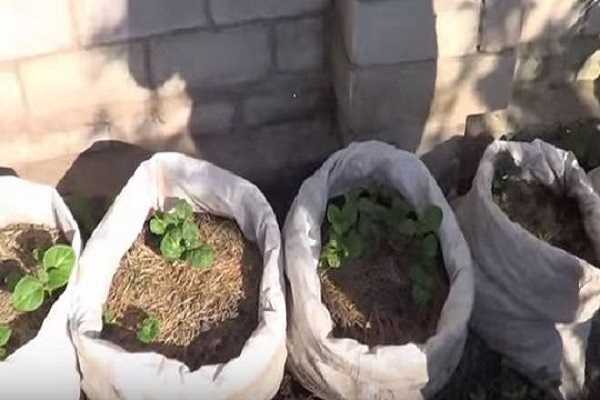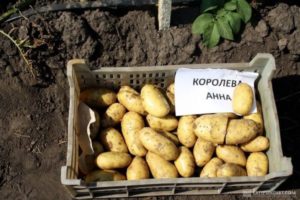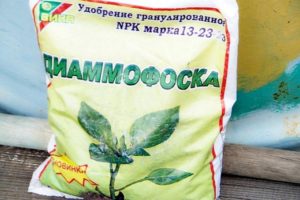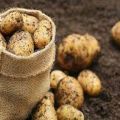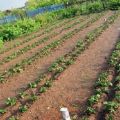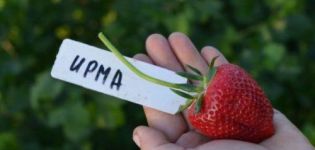Step-by-step technology for growing bagged potatoes
Growing potatoes in bags is a solution for gardeners with limited areas. Traditional culture takes up a lot of space. To obtain good harvests, crop rotation is required.
Growing potatoes is a laborious process. Planting care (watering, weeding, loosening, hilling) takes up free time. You have to work with your back bent. Elderly summer residents give up their favorite culture.
And there is a solution to the problem - to grow potatoes vertically (in bags). Landings take up little space, should be placed in any illuminated place, it is much easier to care for (there is no need to bend over).
It is worth trying to grow potatoes in bags for young gardeners. People get a green harvest and acquire additional skills. Knowledge of agrobiology will help in working with other crops.
Bagged potatoes along the paths will give the site an unexpected flavor. It is worth remembering: in the Petrine era, ball gowns and hairstyles were decorated with flowers.
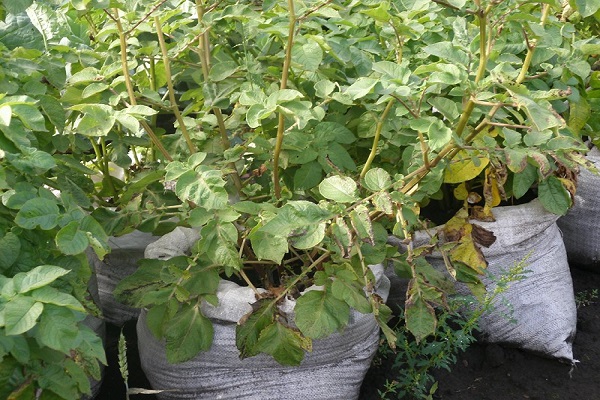
The technology of planting in bags allows you to get root crops even in the absence of free land. The site is occupied by paths or represents an overgrown wasteland: potatoes will delight with the harvest.
How to grow bagged potatoes?
The rules for growing potatoes in bags are simple. But they should be followed thoroughly. Violations lead to the death of plants, loss of yield.

Cultivation technology:
- Prepare containers for planting potatoes in bags. Suitable for ordinary wicker from sugar, flour, animal feed. Make holes at the bottom (for water drainage) and along the entire height (for gas exchange). Some gardeners sew a valve on the bottom of the container (for picking ripe tubers).
- Stock up on nutrient soil in any way: buy ready-made or make yourself. The soil should be loose, fertile. Acidity pH 5.5. Disinfect the prepared soil with a pink solution of potassium permanganate.
- Pour soil into the bags to 1/3 of the height. Divide the tubers whole or cut into pieces (one in the center, three around). Sprinkle with soil with a layer of 5 cm. Drizzle. Roll up the edges of the container. Mulch the planting with rotten straw.
- Put the planted tubers in a sunny place. After the tops have grown by 15 cm, rake off the mulch, cover it with 12 cm of soil, return the straw to its place. Repeat the procedure twice.
- Grown early potatoes easy to reach through the bottom flap. Small tubers continue to grow, the roots are not damaged, the soil does not spill out.
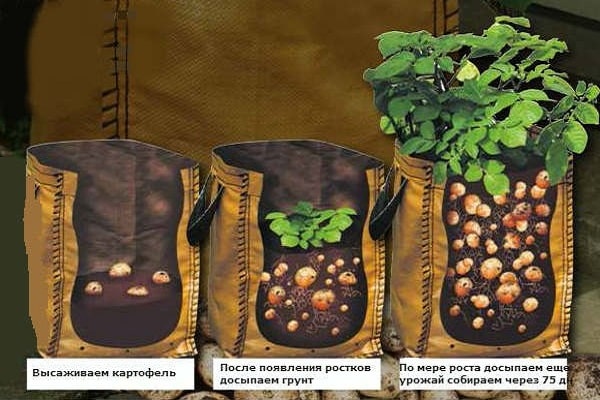
On sale you can find special bags for such plantings. They are made of dense plastic. They have holes and a valve. The container service life is several years.
Some gardeners use garbage bags inserted into each other. The decision is ecologically wrong: the material releases harmful toxins.
Attention should be paid to watering. With a lack of moisture, tubers stop forming. For optimization, it is recommended to install instruments that measure soil moisture in bags.
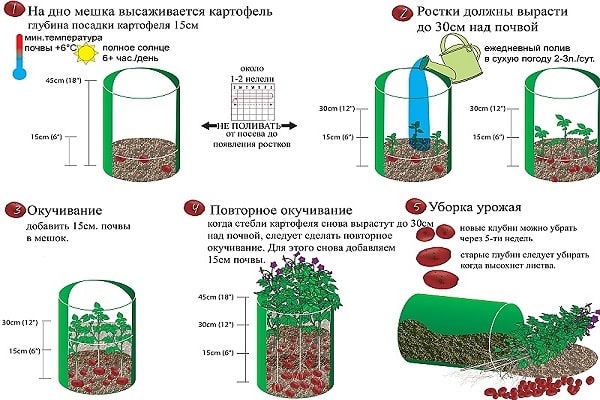
Tubers develop in a confined space. The soil is depleting. Top dressing with mineral fertilizers is required to be applied regularly. A combination of potassium and phosphorus is effective. Excess nitrogen in a rainy summer will lead to late blight.
Place the bags away from unfriendly plants: tomatoes, peppers, eggplants. Does not like the presence of strawberries and strawberries potatoes. And beans, beans, salad, marigolds are pleasant to him. Marigolds scare off the Colorado potato beetle.
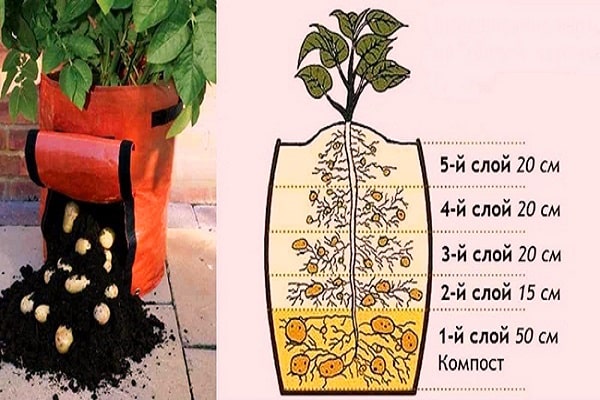
Pros and cons of "bag" technology
Gardeners, pondering how to grow potatoes in a bag, evaluate the pros and cons of the method. Positive points:
- to collect potato harvest really in minimal gardens;
- loose soil, saturated with air;
- the soil is easy to structure, disinfect;
- weeding, hilling are not required;
- easy to dig in early potatoes.
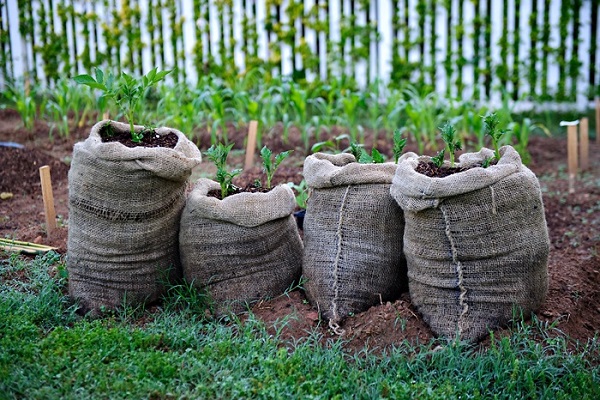
Such planting in bags makes it possible to grow an environmentally friendly crop in limited planting areas. Collecting root crops is convenient (valve helps).
Before planting tubers in a container, you should evaluate the negative points:
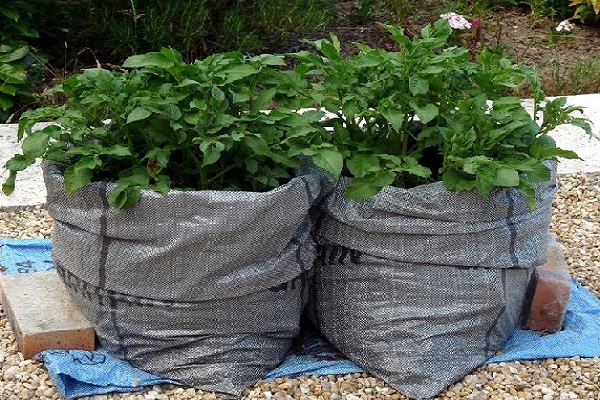
- it is required to purchase bags, prepare the ground;
- the number of watering and dressing increases;
- bags last 1–2 seasons;
- waste soil requires renewal;
- vertical container - a house for garden ants.
Growing in bags increases the cost of the process by 15–20%. We have to apply more fertilizers, buy soil, renew worn-out containers.
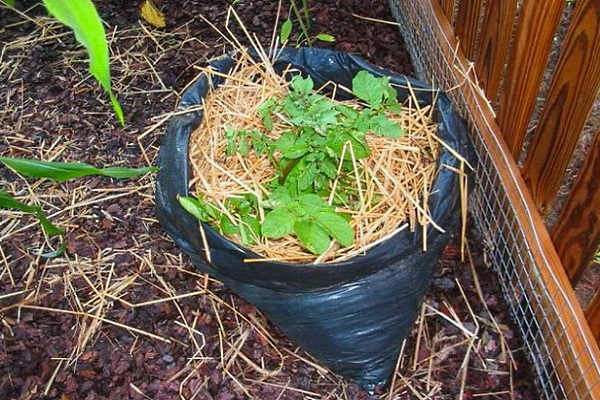
Negative feedback about the method of planting in bags is given by gardeners who have made mistakes. The most common:
- lay out the planting material at the very bottom;
- pour a layer of soil more than 5 cm;
- put new planting material before pouring;
- use poor-quality tubers (rotten, pest-infested, gnawed by mice);
- lack of regular watering;
- stagnation of water after irrigation (leads to acidification of the soil);
- placement under roof drains (soil erosion occurs);
- placement in a shaded area;
- replacement of the first layer of soil with branches, foliage;
- lack of dressing;
- too much soil layer above the tubers (the plant does not have time to form root crops).
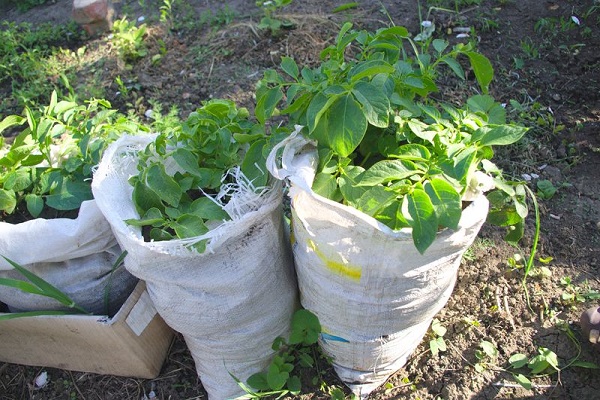
The introduction of ash will help to increase the yield. This measure will reduce the acidity of the soil. Excess nitrogen will cause the bushes to fatten. Only mature compost or rotted manure should be introduced. The faeces of herbivores (cows, goats, sheep) contain weed seeds. The plantings will have to be weeded.
To obtain a harvest, you need to step by step carry out the technology of growing in bags.
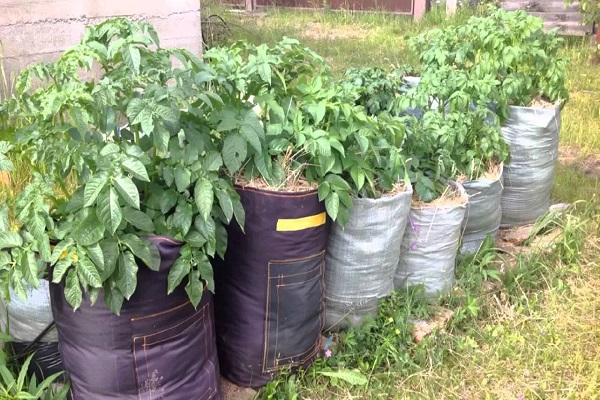
What do experienced gardeners say about the method?
Reviews of experienced summer residents are positive. A gardener from the Moscow region says: “My plot is not large - 4.5 ares. There is a house, a barn, a greenhouse. The paths are paved with tiles. Landing sites minuscule. I grow flowers, herbs, cucumbers and tomatoes. I always dreamed of a potato field. I wanted to eat my own early potatoes. But it was not possible to select a bed.
I read an article about growing in bags. I took 3 pieces of sugar. I cut out the flap at the bottom, sewed on a loop with a button. With an awl, I pierced the holes through 30 cm throughout the volume. The work was carried out on May 1. The hardest part was with the land. I picked it up in the forest, added peat and ready-made soil. Mixed with the potato mineral complex according to the instructions. Then she acted according to the scheme: planting one potato varieties "Nevsky" in the center, 3 - at the edges. I add calcium nitrate. Sprinkle with soil, straw on top.
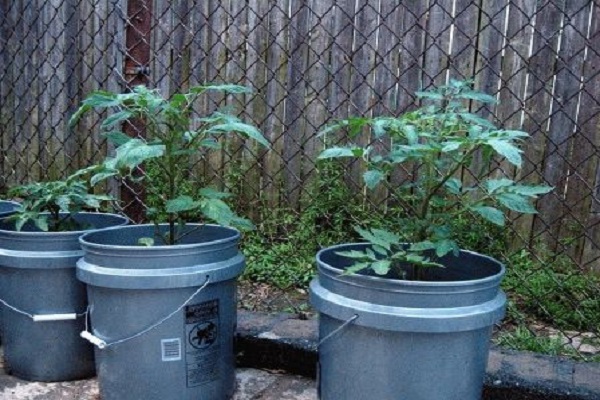
I made a mistake: I landed on the veranda, the bags had to be dragged to the path.Spudded three times (sprinkled the stems with earth). The summer was dry: I constantly watered. She fed me three times. The ants did not bother: in April I treated the site with "Muratsid" according to the instructions.
There were not many Colorado potato beetles: marigolds and curly beans grew nearby. Aphids migrated to beans. The bushes were green. The leaves drooped in the heat. It was low in the evening.
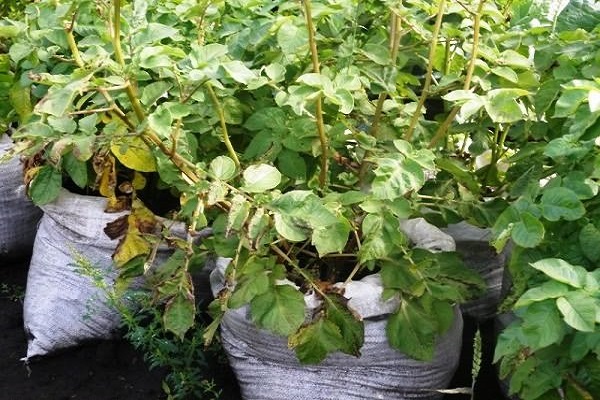
On July 15, through the valve, I pulled out 6 large potatoes from one bag (I did not touch the rest). The plant continued to develop. On August 20, the stems turned yellow. I decided to remove it. The harvest pleased us: with 4 potatoes, 1.5 ten-liter buckets.
I liked the method. She spent no more labor than growing tomatoes. The used soil was scattered on the flower bed and under the roses. Next year I will repeat planting in bags: I will decorate all garden paths. "
